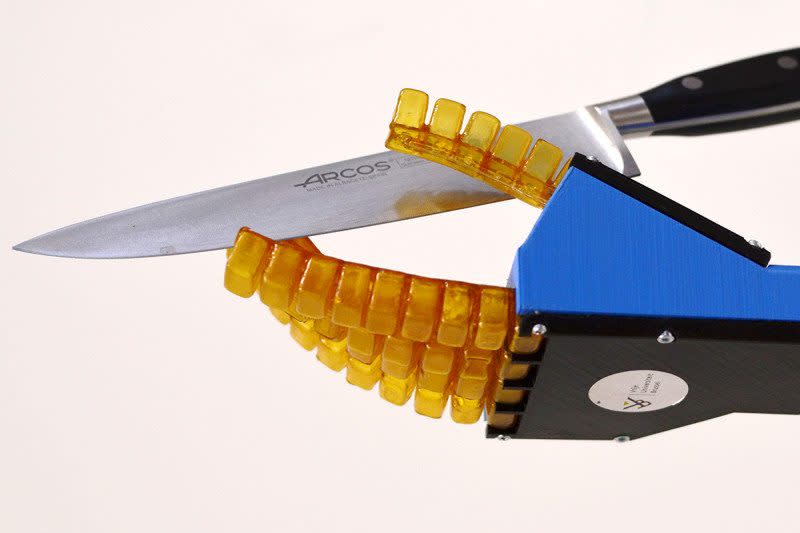Self-healing polymers make for tougher soft robots
You only need to apply heat to trigger their self-healing properties.
Robotic teams around the world are working on soft robots, because some situations call for a touch gentler than what a rigid machine can give. They can squish into tight locations for search-and-rescue missions, for instance, and pick up fragile objects without breaking or damaging them. Unfortunately, they're also more prone to damage, especially if they're bound to come across sharp edges in their environments. To solve that problem, a team of researchers from Vrije Universiteit Brussel in Belgium have developed a way to create soft machines that can heal themselves -- all you have to do is add heat.
The researchers proved that their method works by making a gripper, a robotic hand and an artificial muscle with self-healing properties. In the video above, you can see a robotic hand repair itself after being stabbed. That's made possible by the material the team used to make the robot: jelly-like rubbery polymers with lots of strands that reorganize and lock together when heat is present.
This self-healing property could lead to soft robots' deployment in factories to handle fruits and other delicate items, as well as to their use for actual search-and-rescue missions. The team's current model still requires someone else to apply heat to a robot's wounds, though. To create truly low-maintenance soft machines, the researchers are now finding a way to automatically trigger their self-healing mechanism. They could either tweak the polymers so that they can repair themselves with no external input or find a way for robots to apply heat to their own damaged components.


